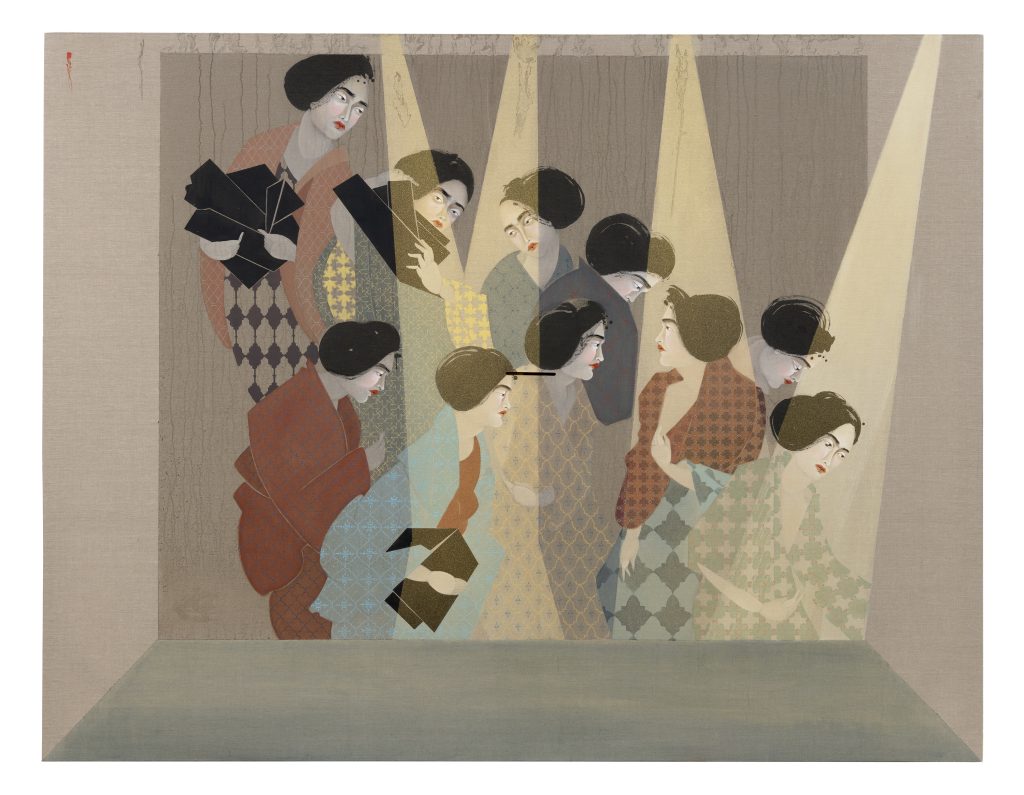Images

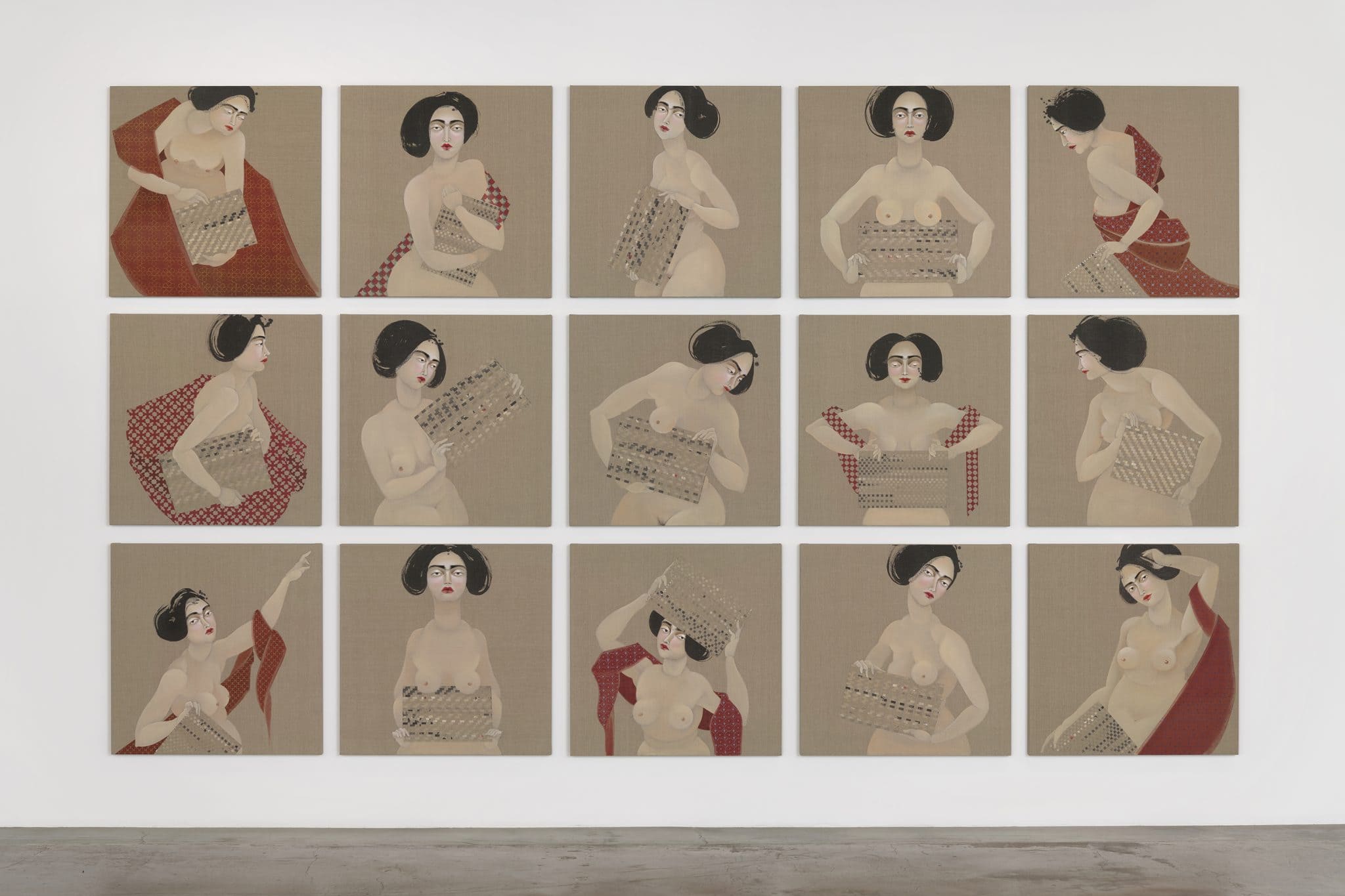
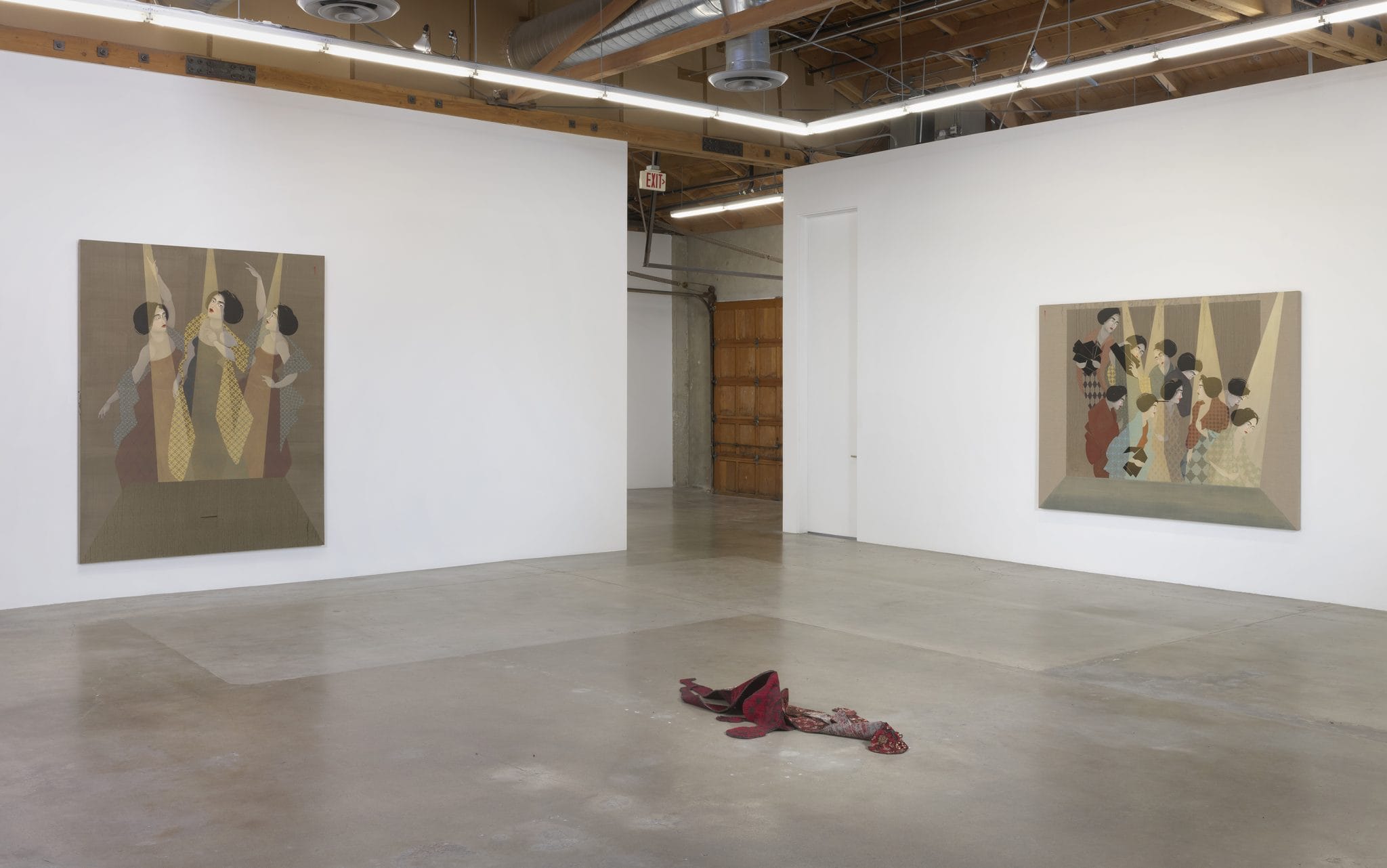

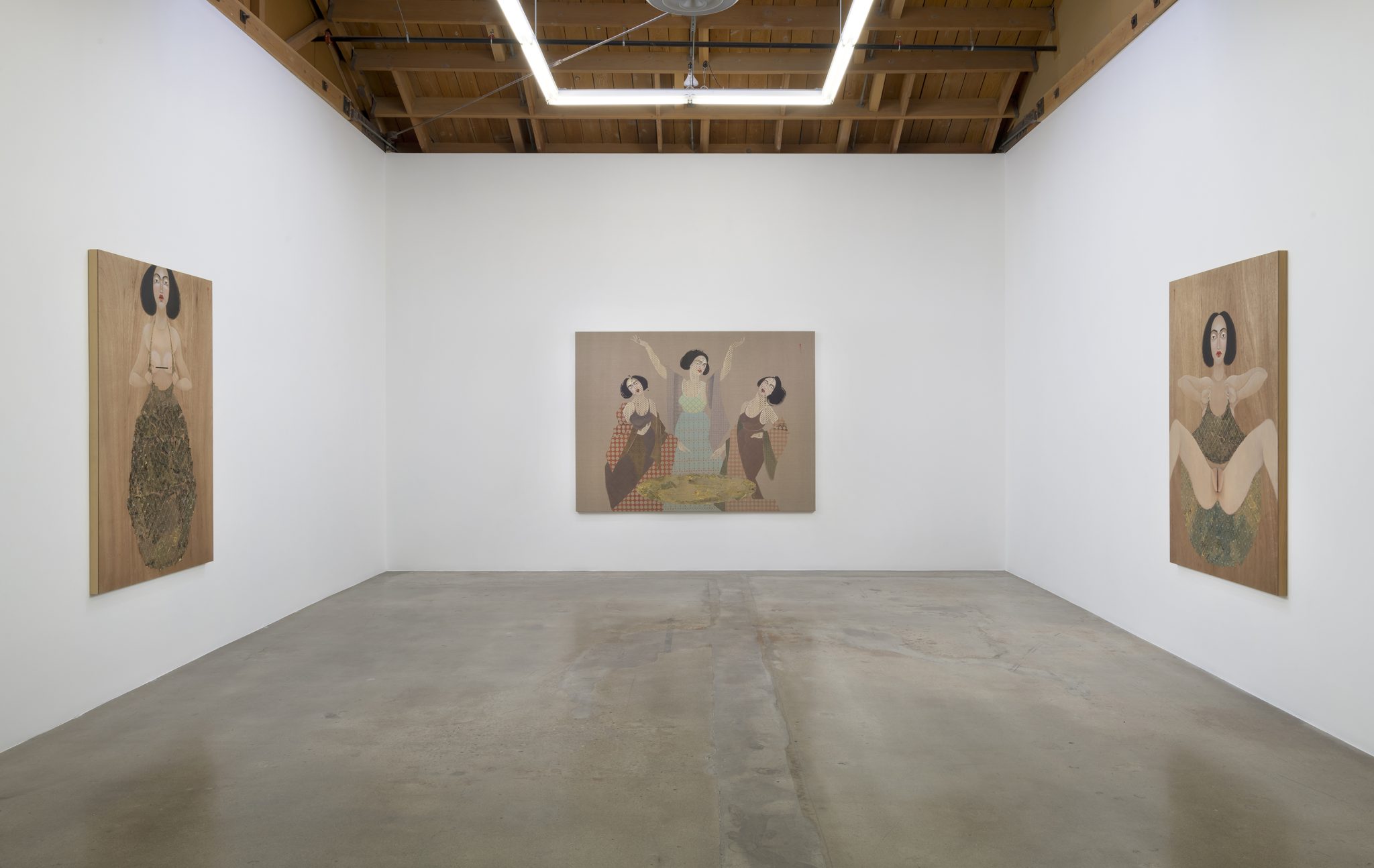
![Hayv Kahraman, The Appeal 13, 2018, Oil on linen, 35 x 35" [HxW] (88.9 x 88.9 cm), Photo credit: Jeff McLane](https://vielmetter.com/wp-content/uploads/2023/09/kahraman_172_theappeal13_hires-2048x1365.jpg)
Hayv Kahraman
The Appeal 13, 2018
The Appeal 13, 2018
Oil on linen
35 x 35" [HxW] (88.9 x 88.9 cm)
Photo credit: Jeff McLane
![Hayv Kahraman, The Appeal 15, 2018, Oil on linen, 35 x 35" [HxW] (88.9 x 88.9 cm), Photo credit: Jeff McLane](https://vielmetter.com/wp-content/uploads/2023/09/kahraman_174_theappeal15_hires-2048x1365.jpg)
Hayv Kahraman
The Appeal 15, 2018
The Appeal 15, 2018
Oil on linen
35 x 35" [HxW] (88.9 x 88.9 cm)
Photo credit: Jeff McLane
![Hayv Kahraman, The Appeal 14, 2018, Oil on linen, 35 x 35" [HxW] (88.9 x 88.9 cm), Photo credit: Jeff McLane](https://vielmetter.com/wp-content/uploads/2023/09/kahraman_173_theappeal14_hires-2048x1365.jpg)
Hayv Kahraman
The Appeal 14, 2018
The Appeal 14, 2018
Oil on linen
35 x 35" [HxW] (88.9 x 88.9 cm)
Photo credit: Jeff McLane
![Hayv Kahraman, Boob Gold, 2018, Oil on wood, 72 x 48" [HxW] (182.88 x 121.92 cm), Photo credit: Jeff McLane](https://vielmetter.com/wp-content/uploads/2023/09/kahraman_151_boobgold_hires-1368x2048.jpg)
Hayv Kahraman
Boob Gold, 2018
Boob Gold, 2018
Oil on wood
72 x 48" [HxW] (182.88 x 121.92 cm)
Photo credit: Jeff McLane
![Hayv Kahraman, Bodies #1, 2018, Oil on linen, 78 x 50" [HxW] (198.12 x 127 cm)](https://vielmetter.com/wp-content/uploads/2023/09/kahraman_149_bodies1_hires-1365x2048.jpg)
Hayv Kahraman
Bodies #1, 2018
Bodies #1, 2018
Oil on linen
78 x 50" [HxW] (198.12 x 127 cm)
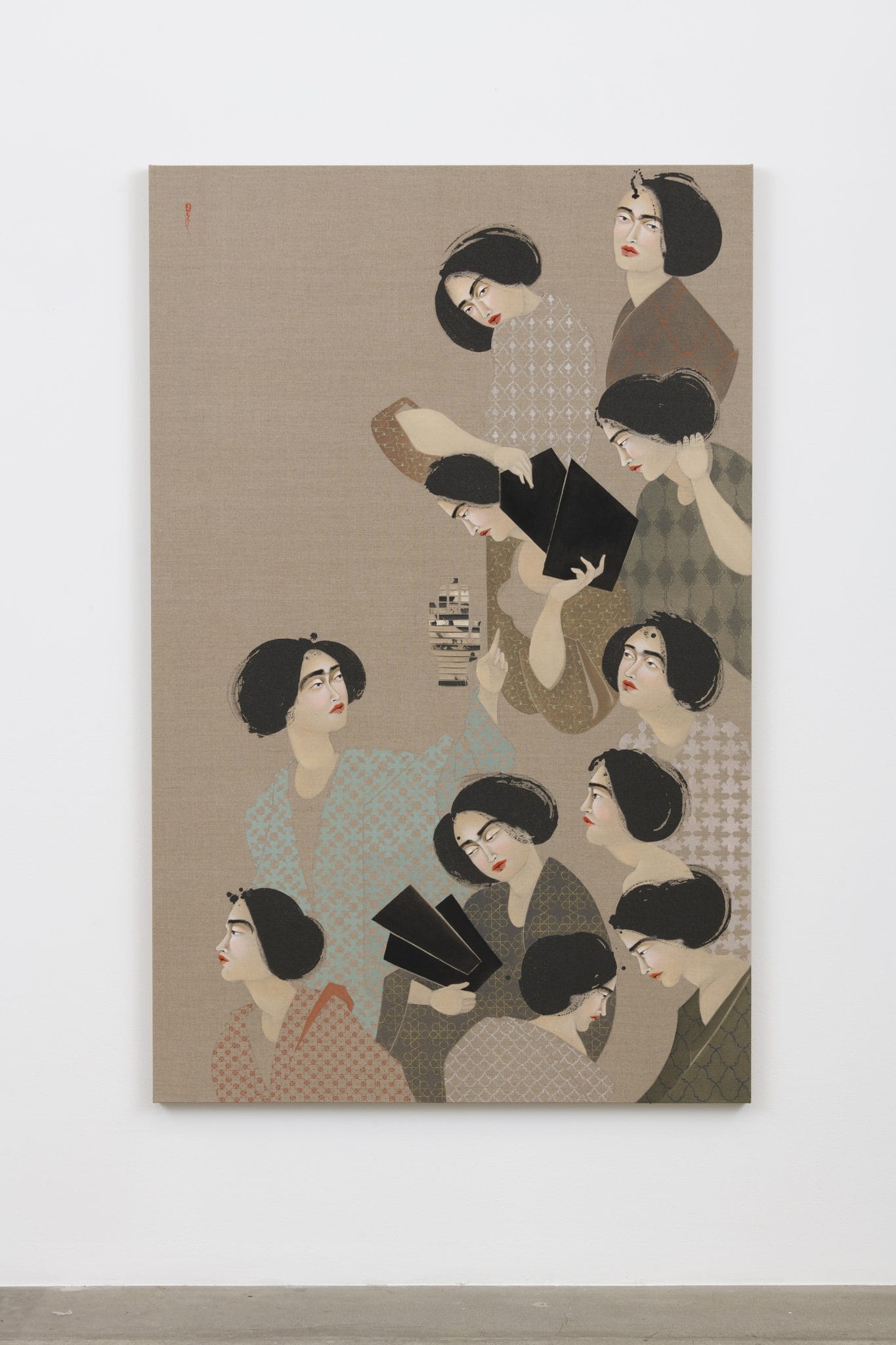
Hayv Kahraman
Bodies #2, 2018
Bodies #2, 2018
Oil on linen
78 x 50" [HxW] (198.12 x 127 cm)
![Hayv Kahraman, The Celebrity, 2018, Oil on linen, 100 x 79" [HxW] (254 x 2.66 cm), Photo credit: Robert Wedemeyer](https://vielmetter.com/wp-content/uploads/2023/09/kahraman_146_thecelebrity_hires-1627x2048.jpg)
Hayv Kahraman
The Celebrity, 2018
The Celebrity, 2018
Oil on linen, 100 x 79" [HxW] (254 x 2.66 cm), Photo credit: Robert Wedemeyer
![Hayv Kahraman, The Kurds, 2018, Oil on linen, 98 x 76" [HxW] (248.92 x 193.04 cm), Photo credit: Robert Wedemeyer](https://vielmetter.com/wp-content/uploads/2023/09/kahraman_148_thekurds_hires-2048x1590.jpg)
Hayv Kahraman
The Kurds, 2018
The Kurds, 2018, Oil on linen, 98 x 76" [HxW] (248.92 x 193.04 cm), Photo credit: Robert Wedemeyer
![Hayv Kahraman, The Audience, 2018, Oil on linen, 97 x 73" [HxW] (246.38 x 185.42 cm), Photo credit: Robert Wedemeyer](https://vielmetter.com/wp-content/uploads/2023/09/kahraman_144_theaudienceinatheatre_hires-2048x1564.jpg)
Hayv Kahraman
The Audience, 2018
The Audience, 2018
Oil on linen
97 x 73" [HxW] (246.38 x 185.42 cm)
Photo credit: Robert Wedemeyer
Press Release
Dr. Miriam Ticktin on Havy Kahraman's exhibition "Silence Is Gold":
The number of immigrants and refugees accepted in the United States and in Europe — and in the global North more generally — has been steadily decreasing, to the point where one’s case must be truly exceptional in order to be legally recognized. Border walls are being built at an unprecedented rate – there were 70 globally at the last count, versus 15 in 1990 — marking a new global right-wing populist politics of border closure. But, the unwillingness to let people in, no matter how much they are suffering, is not new, of course. In Silence is Gold, Iraqi-born artist Hayv Kahraman is inspired by the mass exodus of Kurds from Iraq in April 1991, that she herself was a part of, as a child. This exodus of 3 million people was prompted by what was largely understood as chemical weapons attacks on the Kurdish towns, by Saddam Hussein’s government. Her work grapples with how the exodus was portrayed in the global North, and what elicited attention and resources for those who were fleeing. How can situations of suffering and violence be portrayed, without erasing the dignity of those who suffer, without representing them as victims, as uncivilized and unable to care for themselves? Then, as now, proving one’s worthiness for asylum requires evoking the pity or compassion of the immigration or asylum officials — often by way of a mediatized appeal to a larger public — and demonstrating that the persecution one is fleeing is particularly horrendous.
First, what qualifies as particularly horrendous violence? In a strange and recent twist, today, one of the more promising ways to illustrate the “well-founded fear of persecution” necessary to claim asylum is through the language and imagery of sexual violence — this has special appeal, even if one may have been otherwise tortured, violated or threatened. The legal and moral weight carried by stories of sexual violence is a relatively recent phenomenon; before the early 2000s, survivors of sexual violence were not even included in standard models of humanitarian aid delivery. This is an unexpected result of the successful lobbying of women’s movements of the global North and South in the 1990s; they created the category of “violence against women” by taking bodily integrity as the lowest common denominator of their movements – the one thing they could agree upon — even if we know that bodies can never be fully abstracted from their cultural, political or social contexts, and even if we know that what constitutes violence is not always obvious (are breast implants a forms of gender-based violence?).
Those of us who have struggled and pushed to change a system that condones gender-based violence and gendered inequalities more broadly, applaud this attention. And yet not every form of gender-based or sexual violence is recognized by humanitarian or asylum regimes. The gold standard — a standard that Kahraman’s paintings play with and undermine — requires a form of cultural difference or exoticism that makes the violence seem foreign, and as such, worse than one’s own familiar forms of everyday violence. It allows those who help to feel morally superior. Indeed, using women to mark civilizational difference and hierarchy is a well-worn strategy; in both the British and French colonial regimes, the oppression of women was proffered as reason to intervene, colonize and change whole societies. One might say that this is its latest incarnation.
Sex trafficking, for instance, is condemned in particularly strong terms by the United States, and there are various humanitarian exceptions that give legal documents to those who have been subject to it, if they denounce their pimps or traffickers [Note 1]. And while sex trafficking is surely something to fight against, the victims that are most successful in getting legal support are those who can fit into the frame of the “Third World Women,” as transnational feminist theorist Chandra Mohanty has called the stereotypical suffering victim of oppressive patriarchal cultures. Those who are understood as young, naïve, without agency, docile, and in need of rescue are the most likely to be recognized; this is the classic “victim subject” with its racialized trappings [Note 2]. The problem is, if one does not fit this stereotype, for instance, if one shows agency, as in a desire for a better life or to provide for one’s family, not only is one not helped, but one is criminalized. Similarly, forms of violence seen as “cultural” or “religious” are denounced in particularly vociferous terms. Malala — now a Nobel Peace Prize laureate — is a prime example; the young Pakistani girl was flown to the UK and given medical help after she was shot in the face by the Taliban for furthering girls’ right to education, banned in her village in the name of Islam. These are the forms of violence that get attention, and allow people to cross borders.
By contrast, in June 2018, US Attorney General Jeff Sessions took away the right to use domestic violence as grounds for asylum in the United States. Previously, this clause – under the rubric of gender-based violence – allowed women to escape serious cases of domestic violence, when not protected by their state. Women who experience these severe but regrettably familiar forms of violence – the kind rampant in the United States as well – are not seen as worthy of attention, or justice.
"Silence is Gold" powerfully reveals the important role played by sexuality and violence in claims to asylum and to humanitarian aid; but it also demonstrates that this works differently for different people. Women fleeing from the global South largely need to sexualize and sell themselves to cross borders, or to sell the very real violence they may have experienced [Note 3]. Trafficking victims must be at once innocent and ravaged; they must leverage their violation even as they must be ashamed of it. These women are required to provide the graphic details of their sexual exploitation, in ways that can end up being both horrifying and titillating for those who serve as legal or political adjudicators.
In the series of paintings “Pussy Gold” and “Boob Gold,” the women in Kahraman’s beautiful, textured gold paintings look directly at the audience, unabashedly, unashamedly, spreading their legs or exposing their breasts, while refusing to lower their gaze. They refuse the terms of the humanitarian exchange: they do not allow those who save them to feel benevolent, or to claim innocence themselves. These figures refuse to be demure, or grateful. They simply mark the exchange for what it is. The paintings force the audience to look them directly in the face and see what the public and NGOs ask of these women: to let them be the objects of desire even as this is couched as a moral mission of saving, and civilizing. The paintings echo Orientalist fantasies in places like colonial Algeria, documented in old colonial postcards, where women were featured as oppressed and imprisoned in harems, and yet their largely fictional entrapment actually served as sexual fantasy for the West [Note 4].
Kahraman’s paintings do not permit audiences to escape our own complicity in reproducing these racialized differences in resources and power, and insist on showing us that this ability to save, to help, is accompanied by an illicit pleasure. The paintings further disturb and scramble familiar humanitarian terms, insofar as they are of white-skinned women, recalling Renaissance nudes, albeit with the dark-haired, fine traces of Persian miniatures. These women compel the audience to recognize themselves not only as saviors but as victims: would the audience agree to these same terms of subjection, sexualization, prostitution and exposure? Who actually carries the shame here — those who bare themselves, or those who ask them to do so?
The paintings play with gold as both color and texture. The rough textures, cut-up fabrics and multi-layering show that nothing is pure, simple or one-dimensional, despite the purity and innocence we ask for from the women who are being saved. The pure white is overlaid with the impurities of gold-leaf paint, creating a palimpsest that not only connects these paintings to each other, but to the history of such images, and to previous spectacles of suffering. Oxfam and the Red Cross campaigns deployed what we now think of as the paradigmatic images of women and starving children to raise awareness and money as early as the 1950s and early 1960s. But the Live Aid concerts of the 1980s brought images of suffering home in a new way, carried forward by celebrities. The first one, produced by Geldorf and Ure, took place in 1985 to raise relief funds for the Ethiopian famine of 1983-85. But most relevant for Kahraman – a set of images to which her work speaks back—- is the epic, 5-hour-long Live Aid concert in 1991 hosted on MTV and sponsored by British Tory MP Jeffrey Archer, called “The Simple Truth: A Concert for Kurdish refugees” which featured singers such as Madonna and Whitney Houston against a backdrop of images of the suffering Kurds, fleeing Saddam Hussein. Needless to say, almost none of the 57m pounds raised by Archer reached the Kurdish villages in need [Note 5].
As anthropologist Liisa Malkki argued in 1996, refugees, especially African refugees, are figured as “a ‘sea’ or ‘blur of humanity’” — as “a spectacle of a ‘raw,’ ‘bare humanity’” [Note 6]. They are understood as passive and voiceless: reduced to an undistinguished mass of bodies rather than individuals, they represent a humanity stripped of dignity. While cast as solidarity, spectacles of suffering masses primarily evoke pity. And a politics of pity is not about equality or justice; while justice is concerned with fairness and requires recourse to standards or conventions of equivalence, pity sets up two classes of people, the fortunate and the unfortunate, where the unfortunate are often regarded as victims [Note 7]. It is a hierarchical emotion.
But gold is also a play on the colors figured in humanitarian campaigns, like Bono’s Product RED; RED is an initiative to engage the private sector — and companies like Nike and Apple — to help in addressing HIV/AIDS in Africa, in what has become known as ethical consumerism. Companies label their products with the RED brand, which informs their consumers that by choosing this brand, they are helping to address the epidemic, directing part of their profits toward the Global Fund. This is considered a win-win for everyone; such branding avoids the visual realism related to suffering, and yet allows people to feel they have responded with immediacy [Note 8]. The market logic leverages the celebrity status of actors, while erasing the causes of HIV/AIDS and the complicity of those who give: there is no mention of the conditions in which HIV/AIDS and other epidemics flourish — from the monopolies of big pharmaceutical companies, who own the drug patents and insist on huge markups making life-saving drugs unaffordable to most — to the Bush (now Trump) policies like the global Gag rule which refuse aid to healthcare organizations that also provide reproductive and abortion services to women.
Kahraman’s paintings play with these different figures, of audience, celebrity and suffering masses; they are distinguished by their dress and their posture, and by how many are figured together in one frame, but their faces are nearly interchangeable, showing how we all could or should be able to exchange places; in particular, of course, the artist herself paints from the perspective of both the refugee being saved, and the celebrity of the artist bringing attention to a cause. The “body carpet” installation shows her — and potentially all of our — ability to inhabit both spaces: the beautiful body — modeled on the artist’s body, in fact — can be fleshed out and whole, or strewn on the ground, in limp-like body parts. The problem is that not everyone is able to claim both wholeness and vulnerability; some of us only accept to be saviors, and some are only allowed to be victims. This is the dilemma of contemporary humanitarianism; it is institutionalized in ways that maintain inequality.
Is there a way to represent suffering respectfully, to call people into solidarity with those in need on the basis of equality? The United States government clearly does not think so, as they refuse to allow their soldiers to be photographed dead or dying: there is no dignity in this. To me, Kahraman’s haunting work confirms this; she suggests that humanitarian imagery requires commodification, sexualization, hierarchy. But thanks to her, we can see this directly, stare it in the face; she exposes humanitarianism as both compelling and corrupt, beautiful in theory and dependent on racialized, non-innocent desires. But in so doing, she creates an opening, giving us a chance to take a different type of responsibility.
Note 1 For instance, there is the T nonimmigrant status visa. https://www.uscis.gov/humanitarian/victims-human-t…
Note 2 Kapur, Ratna. 2002 The Tragedy of Victimization Rhetoric: Resurrecting the "Native" Subject in International/Post Colonial Feminist Legal Politics. Harvard Human Rights Journal 15:1-38.
Vance, Carole. 2012. “Innocence and Experience: Melodramatic Narratives of Sex Trafficking and Their Consequences for Law and Policy. History of the Present 2 (2):200-218.
Mohanty, Chandra. 1988. "Under Western Eyes: Feminist Scholarship and Colonial Discourses." Feminist Review 30.1: 61-88. Print.
Note 3 Take the example of Nafissatou Diallo, who was sexually assaulted by former IMF director and French presidential hopeful Dominic Strauss Kahn; in the court proceedings, it came out that to get asylum, she claimed that she was gang raped instead of simply raped, knowing her case would be more compelling that way. http://lmsi.net/Two-Species-of-Sexual-Violence. See also Ticktin, Miriam. 2011. Casualties of Care: Immigration and the Politics of Humanitarianism in France. Berkeley: University of California Press.
Note 4 See Malek Alloula. 1986. The Colonial Harem. Minneapolis: University of Minnesota Press.
Note 5 https://www.theguardian.com/uk/2001/jul/26/iraq.ar…
Note 6 Malkki, Liisa. "Speechless Emissaries: Refugees, Humanitarianism, and Dehistoricization." Cultural Anthropology 11.3 (1996): 377-404. p. 387.
Note 7 Boltanski, Luc. 1999 Distant Suffering: Morality, Media and Politics. G. Burchell, transl. Cambridge: Cambridge University Press.
Note 8 Chouliaraki, Lilie. "Post-Humanitarianism: Humanitarian Communication Beyond a Politics of Pity." International Journal of Cultural Studies 13.2 (2010): 107-26. See also Richey, Lisa Ann and Ponte, Stefano. 2011. Brand Aid: Shopping Well to Save the World. Minneapolis: University of Minnesota Press.
Kahraman has had numerous solo exhibitions including, "Hayv Kahraman: Acts of Reparation," Contemporary Art Museum (CAM), St. Louis; "Havy Kahraman," Joslyn Art Museum, Omaha; "A Change of Place: Four Solo Exhibitions," The School, Kinderhook; "Audible Inaudible, Third Line Gallery, Dubai; and "Re-Weaving Migrant Inscriptions," Jack Shainman, New York. Her work has also been featured in group exhibitions including: "The Art Show: Art of the New Millennium in the Taguchi Art Collection," The Museum of Modern Art, Gunma; "Making Her Mark," Mattatuck Museum, Waterbury; "No Man’s Land: Women Artists from the Rubell Family Collection," Miami which traveled to the National Museum of Women Artists, Washington DC; "Us Is Them," The Pizzuti Collection, Columbus; "Piece by Piece: Building a Collection," Kemper Museum of Contemporary Art, Kansas City; Echoes: Islamic Art and Contemporary Artists, Nelson-Atkins Museum, Kansas City; "The Jameel Prize 2011 – Shortlist Exhibition," Victoria and Albert Museum, London which traveled to venues including the Museum of Fine Arts, Houston and the Cantor Center, Stanford University; and "Fertile Crescent," Paul Robeson Center for the Arts, Princeton. Her work is included in several public collections including the Los Angeles County Museum of Art; MATHAF Museum of Modern Art, Doha, Qatar; American Embassy, Baghdad Iraq; the Joslyn Art Museum, Omaha, NE; the Barjeel Art Foundation, Sharjah, UAE; and the Museum of Contemporary Art, San Diego.
This September Kahraman will also have a solo exhibition at the Pomona College Museum of Art: "Project 52: Hayv Kahraman," September 4–December 22, 2018. A fully illustrated exhibition catalogue Hayv Kahraman: Project Series 52, co-published with the Pomona College of Art will be available September 25, 2018. As part of the museum's public programming there will be a collective performance titled "Gendering Memories of Iraq" created by Kahraman on Thursday, October 11 from 7 – 9 pm.

